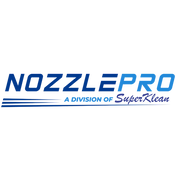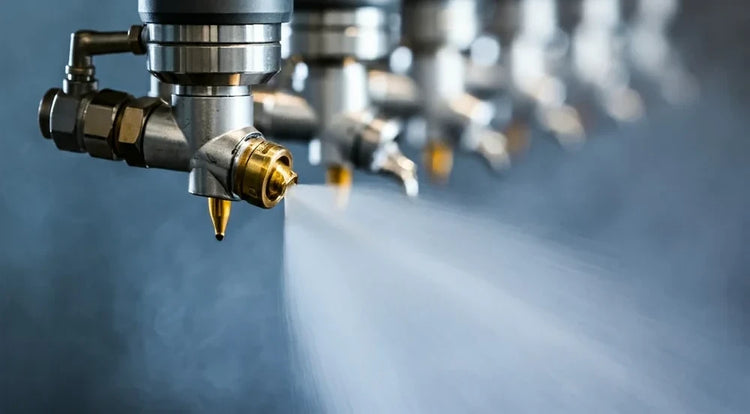Mining Water Conservation & ROI Calculator
Discover how much worn nozzles are costing you in wasted water, energy, and maintenance. Calculate your potential savings with optimized spray systems.
Interactive tool | Real mining data | Instant ROI analysis
Interactive Calculators
💧 How Much Are Worn Nozzles Costing You?
💰 Spray System Upgrade ROI
Why Water Conservation Matters in Mining
💧 Water Consumption Reality
Worn nozzles gradually enlarge due to abrasion, increasing flow rates by 5-15% without detection. A 10% increase across 12 nozzles running 2,000 hours/year = 100,000+ gallons of waste.
Annual waste: up to $15K⚡ Energy Cost Amplification
Increased nozzle flow demands higher pump pressure, driving energy costs up exponentially. This compounds water costs—you're paying to move water you don't need.
Hidden energy cost: 30-40%🔧 Maintenance & Downtime
Frequent nozzle replacements and system clogs cause unscheduled maintenance. Each hour of downtime in a mining operation costs $500–$2,000+ in lost production.
Per incident: $2K–$10KHow to Maximize Water Conservation in Your Mining Operation
Water conservation isn't just an environmental concern—it's a financial imperative. Here's the engineering approach:
1. Monitor Nozzle Flow Degradation
The most cost-effective optimization starts with flow monitoring. Many operations use "wet dump tests" where they measure water flow before and after operation. A 10-15% increase signals replacement time.
2. Specify Wear-Resistant Materials
316L stainless steel wears out in 1-2 months in abrasive slurries. Upgrading to tungsten carbide extends service life to 12+ months. While the per-unit cost is higher (5-7x), the total cost of ownership is 60-70% lower.
3. Implement Predictive Maintenance
Use pressure/flow monitoring systems to track real-time performance. Predictive maintenance replaces nozzles before they degrade, eliminating the silent waste period when a partially worn nozzle is still operational but consuming 10-15% excess water.
4. Optimize System Pressure Settings
Many operations run higher pressure than necessary. Since flow is proportional to the square root of pressure, reducing pressure by 20% can cut water consumption by 10% with minimal performance loss. Test your specific application.
5. Invest in Efficient Nozzle Designs
Hollow cone and air atomizing nozzles consume significantly less water than full cone designs while providing superior dust suppression. The engineered spray pattern directly correlates to water efficiency.
Real-World Mining Water Conservation Examples
Case Study 1: Large Copper Mining Operation
Scenario: 45 spray nozzles across crusher and conveyor systems, running 2,000 hours/year.
- Initial condition: 20% average wear on all nozzles
- Annual water waste: 180,000 gallons ($630 in water cost + $1,200 in excess energy)
- Upgrade investment: $8,500 (new nozzles + install)
- Expected savings: 40% reduction in consumption = $728/year
- Payback: 11.7 months
- 5-year savings: $2,640 (after payback)
Case Study 2: Aggregate Quarry with High Pressure System
Scenario: High-pressure misting system with 24 nozzles on haul roads, 1,800 hours/year.
- Initial condition: Worn nozzles causing 15% flow increase
- Annual water waste: 240,000 gallons ($840 water + $1,680 energy)
- Upgrade investment: $12,000 (tungsten carbide nozzles + retrofit)
- Expected savings: 45% reduction = $1,179/year
- Payback: 10.2 months
- 10-year savings: $9,432 (after payback)
Case Study 3: Small Coal Preparation Plant
Scenario: 18 nozzles on screens and conveyors, 2,200 hours/year.
- Initial condition: 12% average wear
- Annual water waste: 95,000 gallons ($380 water + $670 energy)
- Upgrade investment: $4,200 (ceramic nozzles + installation)
- Expected savings: 38% reduction = $402/year
- Payback: 10.4 months
- 3-year savings: $406 (after payback)
Water Consumption Data: High-Pressure vs. Optimized Systems
Spray System Water Efficiency Comparison
How much water do different nozzle types consume?
| Nozzle Type | Flow Rate (gpm) | Droplet Size | Water Efficiency |
|---|---|---|---|
| Air Atomizing (Dry Fog) | 0.5–1.5 gpm | <10 μm | Highest (50-60%) |
| Hollow Cone Hydraulic | 2–4 gpm | 20–200 μm | High (60-70%) |
| Full Cone Hydraulic | 3–6 gpm | 50–300 μm | Moderate (70-80%) |
| Flat Fan Hydraulic | 2–8 gpm | 100–400 μm | Lower (80-90%) |
| Worn Nozzles (All Types) | +5-15% from baseline | N/A (degraded) | Lowest (90%+) |
Note: Efficiency percentages represent water waste ratio. Lower percentages = better efficiency.

